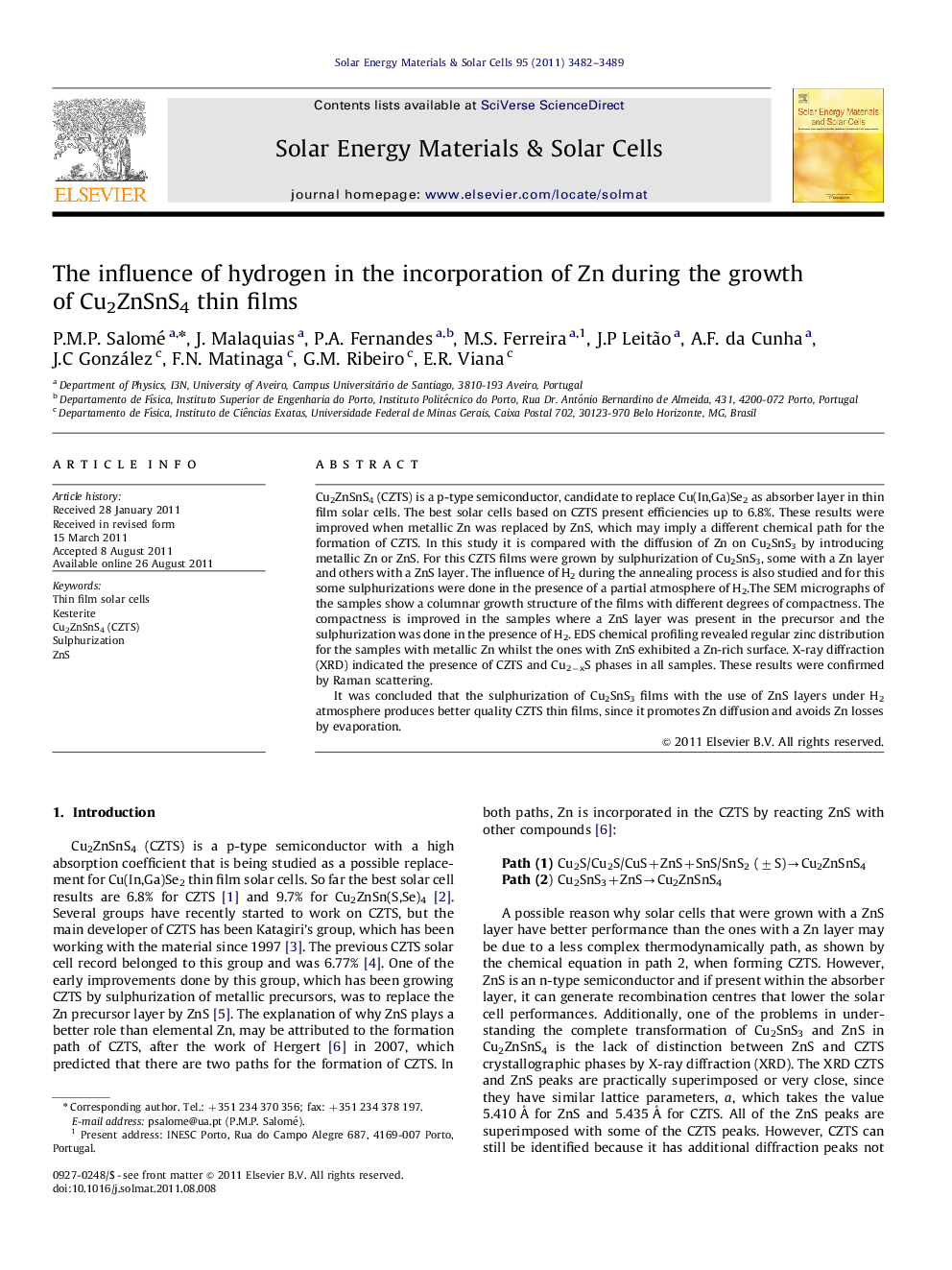| کد مقاله | کد نشریه | سال انتشار | مقاله انگلیسی | نسخه تمام متن |
|---|---|---|---|---|
| 79655 | 49362 | 2011 | 8 صفحه PDF | دانلود رایگان |

Cu2ZnSnS4 (CZTS) is a p-type semiconductor, candidate to replace Cu(In,Ga)Se2 as absorber layer in thin film solar cells. The best solar cells based on CZTS present efficiencies up to 6.8%. These results were improved when metallic Zn was replaced by ZnS, which may imply a different chemical path for the formation of CZTS. In this study it is compared with the diffusion of Zn on Cu2SnS3 by introducing metallic Zn or ZnS. For this CZTS films were grown by sulphurization of Cu2SnS3, some with a Zn layer and others with a ZnS layer. The influence of H2 during the annealing process is also studied and for this some sulphurizations were done in the presence of a partial atmosphere of H2.The SEM micrographs of the samples show a columnar growth structure of the films with different degrees of compactness. The compactness is improved in the samples where a ZnS layer was present in the precursor and the sulphurization was done in the presence of H2. EDS chemical profiling revealed regular zinc distribution for the samples with metallic Zn whilst the ones with ZnS exhibited a Zn-rich surface. X-ray diffraction (XRD) indicated the presence of CZTS and Cu2−xS phases in all samples. These results were confirmed by Raman scattering.It was concluded that the sulphurization of Cu2SnS3 films with the use of ZnS layers under H2 atmosphere produces better quality CZTS thin films, since it promotes Zn diffusion and avoids Zn losses by evaporation.
SEM cross section image of a Mo/SnS/CuS/ZnS precursor sulphurized in an atmosphere of H2.Figure optionsDownload as PowerPoint slideHighlights
► Cu2ZnSnS4 thin films were prepared by depositing Zn or ZnS on top of Cu2SnS3.
► The sulphurization was performed either in a pure N2 or in a N2+H2 atmosphere.
► XRD, Raman scattering, SEM, EDS and electrical conductivity.
► Best samples had a ZnS layer and had a N2+H2 during the sulphurization.
Journal: Solar Energy Materials and Solar Cells - Volume 95, Issue 12, December 2011, Pages 3482–3489